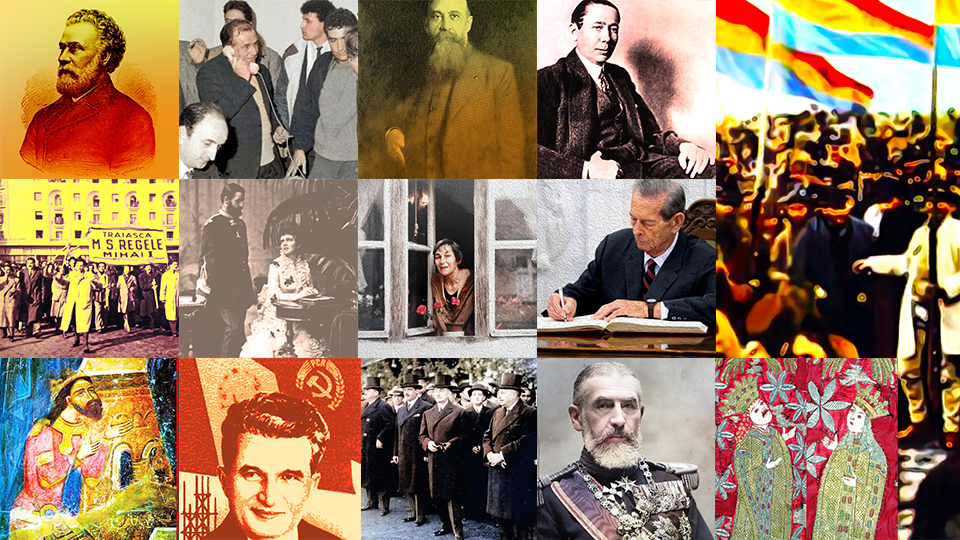Recollections of Brancusi
Constantin Brancusi as seen by some of the people who knew him.

Steliu Lambru, 07.07.2014, 10:23
Constantin Brancusi is the best known Romanian fine artist. Around the world, no other Romanian artist received so much appreciation, or was so much acclaimed, or had their name so closely tied to a fine arts field, as Brancusi’s name has been associated with sculpture.
However, Constantin Brancusi did not love fame, nor did he ever seek it. On the contrary, he was an austere man, too concerned with his art to pay much attention to other people and the media. That is one of the main reasons why there are no recorded interviews of Brancusi, and footage of the great artist is scarce. However, Brancusi lived in the memory of those who knew him and who were interviewed by Radio Romania’s Oral History Center.
One of those who knew Brancusi was art critic George Oprescu. In 1963, he gave Radio Romania an account of the two meetings he had with Brancusi. The first one was after World War One, in the artist’s studio in Paris, on Impasse Ronsin, where Brancusi lived for half a century, from 1907 until his death, in 1957.
George Oprescu: “Brancusi’s studio, which was very roomy, had huge old timber beams, some of them 50-60 centimeters wide and several meters long, brought over from a village in Brittany, where several houses had collapsed. Piled one on top of the other, the beams awaited the artist’s accomplished hand. It had the air of a cave, an underground place where a mythological one-eyed creature was set on turning wood into things that the world would marvel at. At that time I was passionate about Wagner and Wagner’s mythology, so this is what I thought when I saw it.”
In 1937, Oprescu returned to Paris, in Brancusi’s studio, and what he saw was an artist in a slightly changed setting, and an artist who had changed as well:
George Oprescu: “This time, what made his studio unique were no longer the huge timber beams that used to be there. By that time, Brancusi’s main interest had shifted to stone and polished metal sculpture. Such works, placed on mobile platforms that electric mechanisms set in motion, kind of took me by surprise, in a rather unpleasant way. Then we had a meal, cooked by the artist himself, and we talked for at least two hours about what I saw. What was striking in Brancusi’s look, something that I couldn’t forget for years after I first saw him, was some sort of rustic loftiness, his strong, agile, although not very tall, body. I particularly remember the eyes, as they were extraordinary! They were quite meaningful, you could always tell what was going on in his heart and mind. You could read his heart by simply looking into his eyes. He was soft-spoken and very articulated. And on that night he had something of an artist who had deciphered the ultimate truth about art.”
Dyspré Paleolog was a Radio Romania journalist back in the time of the Second World War, who took refuge in Paris following the Soviet occupation. As a student, he started visiting Brancusi, who used to be his father’s university colleague.
Dyspré Paleolog “He was very close to my dad. They had been very close friends in their student years. My father wrote some of the first books about Brancusi. The last one, which I had printed in French, caused quite a sensation in culture of Paris and was highly appreciated by those who knew Brancusi well. While in France the sculptor also befriended a young down-and-out student. He told me, ’Lad, be smart and keep away from the Romanian Legation’. Those words proved quite helpful at the time. I paid him 5 or 6 visits and had interesting discussions. Brancusi had little connection with Romanians, he avoided the Romanian immigrants, who were going through a difficult period, and were very divided. Some of the Romanians in Paris were anti-communists, others were democrats and there were also left-wingers. Very few were rabid communists. I also stayed away from them, just as Brancusi.”
Professor and officer Virgil Coifan recollected a festivity that took place close to the monuments in Targu Jiu back in 1938.
Virgil Coifan: “We went to the park in Targu Jiu and were waiting for the prefect to come. The headmaster of the school in Tismana met Brancusi and they were having a friendly talk. I don’t remember whether they were relatives or just close friends. He said to Brancusi, ‘hey maestro, the people around here, the locals, say you’ve been mocking them with these monuments!’ And Brancusi retorted: ‘That’s what Mr. Tatarascu’s opponents say.’ Brancusi went on adding how much the Tatarascu family had assisted him in the works and that it was Aretia Tatarascu who insisted the most on him doing the monument.”






























